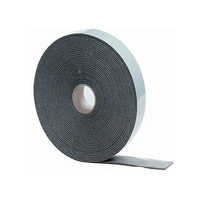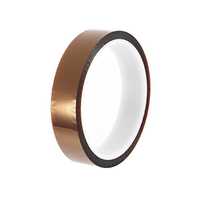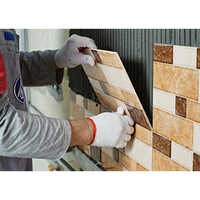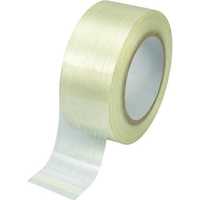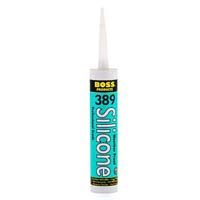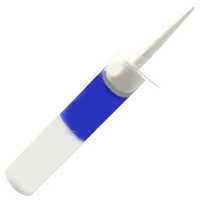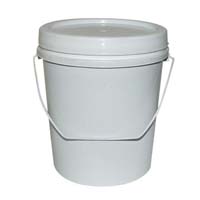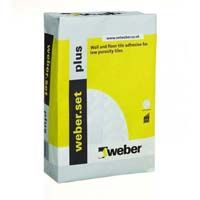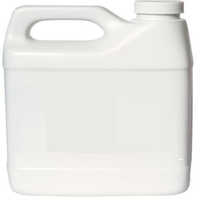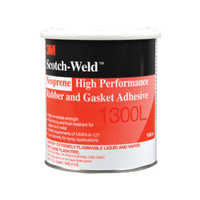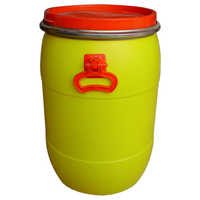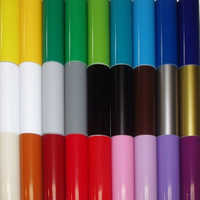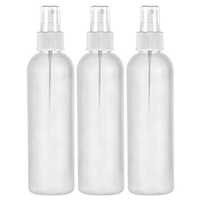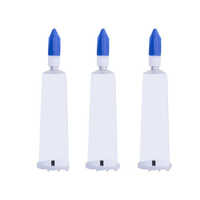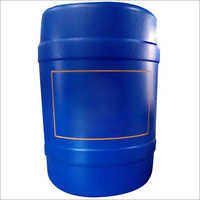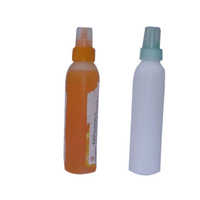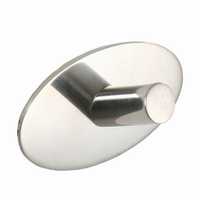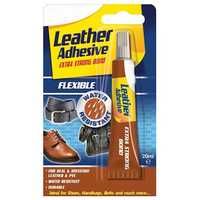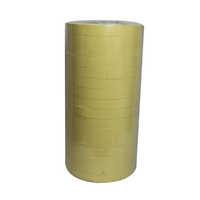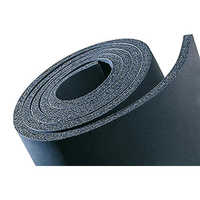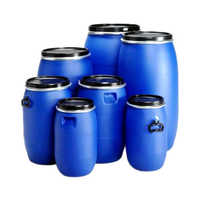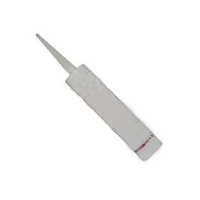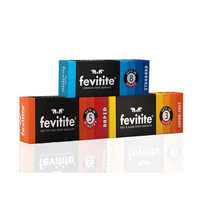Adhesives & Sealants
(6401 products)
Explore More Categories
Made in India
Adhesive Mixer - Application: Industrial
Price: 6500 INR (Approx.)/Piece
MOQ - 1 Piece/Pieces
Color - Yellow & Silver
Material - Other
Usage - Other
8 Years
Business Type: Manufacturer | Distributor
MM2MM PRODUCTS
Orevac OE850 White Industrial Adhesive
Price: 215 INR (Approx.)/Kilograms
MOQ - 100 Kilograms/Kilograms
Color - White
Storage Temperature - Room Temperature
Usage - Other
9 Years
Business Type: Manufacturer | Supplier
SWASTIK INTERCHEM PRIVATE LIMITED
Made in India
Grey Fosroc Nitobond Ep Epoxy Bonding Agent
Price: 3000 INR (Approx.)/Unit
MOQ - 1 Unit/Units
Other Names - Epoxy Bonding Agent
Usage - Construction
Grade - Industrial
2 Years
Business Type: Distributor | Supplier
ADT Industries
Indian Inquiries Only
Made in India
Industrial Self Adhesive Strips - Color: White
Price: 25.00 INR (Approx.)/Piece
MOQ - 50 Piece/Pieces
Usage - Construction
Purity - 98%
Application - Industrial
18 Years
Response Rate: 86.09%
Business Type: Manufacturer | Exporter
Satyanarayan Rubber and Plastic Industries
Made in India
Butyl Rubber Sealants
Price: 130 INR (Approx.)/Roll
MOQ - 50 Roll/Rolls
Color - White
Material - Rubber
Other Names - Butyl Rubber Sealants
13 Years
Business Type: Manufacturer | Supplier
OSAKA RUBBER PVT. LTD.
Made in India
Expanded PTFE Joint Sealant
Material - ptfe
Working Temperature - -250 to +315 Celsius (oC)
Corrosion Protection - Yes
12 Years
Business Type: Manufacturer | Exporter
DHWANI POLYMER INDIA PRIVATE LIMITED
Epoxy Adhesives
Price: 400 INR (Approx.)/Piece
MOQ - 1000 Piece/Pieces
4 Years
Business Type: Manufacturer | Supplier
LABH PROJECTS PVT. LTD.
Verified Exporter
( Accepts only Foreign Inquiry)
Made in India
Zta Speciality Tile Adhesive Powder
Price: 2350 INR (Approx.)/Bag
MOQ - 1 Bag/Bags
Usage - Construction
Physical State - Powder
3 Years
Response Rate: 97.75%
Business Type: Manufacturer | Trading Company
MAKON
Made in India
Hot Melt Adhesives Application: Industrial
Price: 400 INR (Approx.)/Kilograms
MOQ - 25 Kilograms/Kilograms
Color - Transparent
Grade - Industrial Grade
Application - Industrial
3 Years
Business Type: Manufacturer | Supplier
DYCON CHEMICALS
Made in India
Arma Cell Check Application: Insulation
Price: 320 INR (Approx.)/Square Meter
MOQ - 1 Square Meter/Square Meters
Material - Other
Usage - Other
Application - Insulation
3 Years
Business Type: Distributor | Supplier
A. M. INDUSTRIES
Upvc Heavy Duty Adhesive - Color: Multicolour
Price: 1000 INR (Approx.)/Piece
MOQ - 1 Piece/Pieces
Grade - Industrial
Purity - 98%
Color - Multicolour
21 Years
Business Type: Manufacturer | Exporter
AQUACHEM INDUSTRIES PVT. LTD.
Made in India
Eco Friendly Lime Stone Lumps
Price: 35 USD ($) (Approx.)/Metric Ton
MOQ - 150 Metric Ton
Material - Other
Usage - Construction, Other
Application - Construction use
4 Years
Business Type: Manufacturer | Exporter
VT ECOGREEN TECHNOLOGIES PRIVATE LIMITED
Made in India
Yellow Liquid 1K Pu Adhesive
Price: 200 INR (Approx.)/Kilograms
MOQ - 200 Kilograms/Kilograms
Adhesive Type - Water Activated
Usage - Construction, Furniture
Purity - 99.99%
4 Years
Business Type: Manufacturer | Distributor
PURNIMA ENTERPRISE
Made in India
Mcon Poly Seal G Application: Industrial
Price: 3600 INR (Approx.)/Kilograms
MOQ - 10 Kilograms/Kilograms
Color - Gray
Material - Other
Usage - Construction
6 Years
Response Rate: 85.71%
Business Type: Manufacturer | Distributor
MCON RASAYAN INDIA LIMITED
Structural Adhesive Sealant Application: Industrial
MOQ - 100 Unit/Units
Material - Silicone
Purity - 99%
Application - Industrial
1 Years
Business Type: Manufacturer | Distributor
Wuerth India Pvt. Ltd.
Indian Inquiries Only
Made in India
Weicon Adhesives And Sealant - Grade: Industrial
Price: 900 INR (Approx.)/Kilograms
MOQ - 12 Kilograms/Kilograms
Adhesive Type - Solvent Adhesive
Other Names - Weicon Adhesives And Sealant
Usage - Construction
18 Years
Business Type: Manufacturer | Exporter
LAKSHMI ELECTRO CONTROLS & AUTOMATION
Indian Inquiries Only
Made in India
Construction Micro Silica Application: Concrete
Price: 12.00 INR (Approx.)/Metric Ton
MOQ - 400 Metric Ton/Metric Tons
Color - Grey
Material - Silicone
Other Names - Micro silica, silica fumes
16 Years
Business Type: Manufacturer | Exporter
ADINATH INDUSTRIES
Made in India
PU Foam Sealant
Price: 325 INR (Approx.)/Piece
MOQ - 1 BOX Piece/Pieces
Product Type - ABRO PU FOAM INSULATION
6 Years
Response Rate: 74.36%
Business Type: Distributor | Exporter
NANDIKA FASTENERS
Made in India
Dowsil Food Grade 732 & High Temperature Silicon Sealant Application: For Fixing And Sealing
Price: 450 INR (Approx.)/Piece
MOQ - 1 Piece/Pieces
Grade - Food Grade
Purity - 100%
Application - For Fixing and Sealing
19 Years
Business Type: Manufacturer | Distributor
JAY AGENCIEZ
Made in India
White Construction Block Jointing Adhesive
Price: 40 INR (Approx.)/Piece
MOQ - 100 Piece/Pieces
Usage - Construction
Grade - Industrial Grade
Color - White
12 Years
Business Type: Manufacturer | Supplier
SHIV ENTERPRISES
Indian Inquiries Only
Banana Extension Glue Primer Age Group: Adult
Price Trend: 4.00 - 4.50 USD ($) (Approx.)/Piece
MOQ - 100 Piece/Pieces
Product Type - Other, Banana Extension Glue Primer
Treatments & Functions - Makeup
Best For - Daily Use
Business Type: Manufacturer | Distributor
DAEJIN GLOBAL CO., LTD
RDP Powder in Cement-Based Tile Adhesives
Usage - Construction
Physical State - Powder
2 Years
Business Type: Manufacturer | Distributor
HEBEI YIDA CELLULOSE CO. LTD.
Made in India
Hvac Adhesives - Color: White
Price: 150 INR (Approx.)/Liter
MOQ - 30 Liter/Liters
Grade - Industrial
Purity - 98%
Color - White
16 Years
Business Type: Manufacturer | Supplier
JAYFLUORIDE PRIVATE LIMITED
Made in India
Psa Lsq Sticker Lamination Adhesive Application: Commercial
Price: 135 INR (Approx.)/Liter
MOQ - 100 Liter/Liters
Adhesive Type - Pressure Sensitive
Grade - First Class
Purity - High
2 Years
Business Type: Manufacturer | Supplier
DoMeh
Made in India
Acrylic Sealant
Price Trend: 150.00 - 1500.00 INR (Approx.)/Bottle
MOQ - 10 Bottle/Bottles
5 Years
Business Type: Manufacturer | Supplier
UGAM TECHNOLOGY
Made in India
Polyster Hot Melt Adhesive Grade: Industrial
MOQ - 1000 Kilograms/Kilograms
Other Names - Hot Melt Adhesive
Usage - Footwear
Grade - Industrial
2 Years
Business Type: Exporter
MAHALAXMI OVERSEAS
Made in India
Armaflex Pipe Seal Adhesive
3 Years
Business Type: Manufacturer
ARMACELL INDIA PVT LTD
Re Dispersible Emulsion Powder
Usage - Construction
Grade - Chemical
Purity - 100%
1 Years
Business Type: Manufacturer | Supplier
Hebei Landcel Cellulose Tech. Co.,Ltd
Adhesives & Sealants Manufacturers | Suppliers in India
| Company Name | Location | Member Since |
|---|---|---|
| Aquachem Industries Pvt. Ltd. | Ahmedabad, India | 21 Years |
| Jay Agenciez | Surat, India | 19 Years |
| Satyanarayan Rubber And Plastic Industries | Ahmedabad, India | 18 Years |
| Lakshmi Electro Controls & Automation | Bengaluru, India | 18 Years |
| Adinath Industries | Kishangarh, India | 16 Years |
| Jayfluoride Private Limited | Vapi, India | 16 Years |
| Osaka Rubber Pvt. Ltd. | Mumbai, India | 13 Years |
| Dhwani Polymer India Private Limited | Ahmedabad, India | 12 Years |
| Shiv Enterprises | New Delhi, India | 12 Years |
| Swastik Interchem Private Limited | New Delhi, India | 9 Years |
What are adhesives and sealants?
Adhesives
The ability of an adhesive to hold two surfaces together under stress for an unlimited period of time is what makes it so useful. Due to their high tensile and shear strengths, adhesives can be used as effective bonding materials under extreme stress. They can create permanent bonding if applied with precision utilizing a meter/mix dispensing device or adhesive dispenser. Both structural and non-structural adhesives exist.
Sealants
A sealant's purpose is distinct from that of an adhesive, and its strength is typically lower. Sealants are frequently used to close off spaces and prevent the surfaces they are applied on from shifting in relation to one another. Sealants provide for greater assembly flexibility, despite adhesives' superior strength. Acrylic systems, silicones, and urethanes are all good examples of sealants.
What are adhesives and sealants and how do they work?
The sealants perform their function by completely filling the void between mating male and female threads. Sealants and adhesives come in a wide variety of forms, and there are numerous factors that may be used to determine which one is best for a certain application.
If you want your sealant to stick to a certain surface, a primer is a must. Primer's limited shelf life is offset by the 20% improvement in adhesion it provides. Using a solvent-based primer, which can be applied with a brush or a cloth, can strengthen your bond.
Most commercial sealants on the market now cure at a rate of a couple of millimeters per 24 hours, which means that they will not stay forever if left in the tube. When exposed to high temperatures and humidity, their shelf life drastically decreases.
Remember that other people and animals may enter the area you are working in, so keep your silicone applicator out of the reach of curious onlookers. If your adhesive has a strong smell, make sure to work in a well-ventilated location.
Are sealants and adhesives the same?
No, they are not the same when used for different purposes.
Sealants VS Adhesives
- Sealants are used to fill up cracks and crevices in order to keep out debris like dirt, dust, and water. Typically, adhesives are created to permanently bond two surfaces together.
- Adhesives are designed to firmly attach two surfaces by bonding them together, while sealants are used solely to prevent leaks and gaps.
- Long-lasting adhesion is difficult to achieve with sealants, and adhesives sometimes fail to dry properly when applied to an outside surface.
- Most sealants have a paste-like consistency, making it easy to fill gaps between substrates and resulting in minimal shrinking. Adhesives are applied as liquids and then harden to bond various materials together.
- In comparison to sealants, which are far more flexible and weaker, the adhesive will provide a harder and more long-lasting feel and aesthetic.
What are the types of adhesives and sealants?
Adhesive types:
1. Super Glue
Super glue refers to any cyanoacrylate adhesive. A strong and long-lasting bond can be made using these Adhesives & Sealants on a variety of materials, including metal, plastic, rubber, glass, and ceramics. Keep it off your skin as much as possible because of how quickly it adheres.
Since the nozzle of the tube frequently becomes clogged as a result of the instant bond with plastic, it is more convenient to purchase numerous smaller tubes rather than one large one.
2. PVA
PVA is available in a variety of strengths and can be used on porous materials including wood, paper, fabric, and certain plastic, and it is inexpensive. The regular strength version is widely used for DIY projects.
3. Epoxy Resin
Epoxy resin, also called two-part adhesive, is made up of two components: the resin itself, and a hardener. By reacting chemically when the two components are combined, epoxy forms a strong seal that is both impervious to water and resistant to extremes in temperature.
In addition to its long lifespan, it is also resistant to chemicals and solvents. It's interesting since it doesn't shrink when cured, which only adds to its durability.
A very high-performance adhesive, this is utilized in the manufacturing and maintenance of airplanes, boats, cars, and sporting goods. Even the most rigid formulas can fill gaps with remarkable efficiency. Epoxy resin can be applied to a wide variety of materials, including wood, metal, plastics, glass, ceramic, and stone.
4. Tile Adhesive
The most typical cause of a botched tiling project is the application of improper adhesive. Talk to a sales associate at your nearby Topline about what adhesive will work best for your project, as it will vary depending on the tile, the wall or floor surface, and the surrounding environment.
If you're looking to save money somewhere, this isn't the place; instead, spend more on higher-quality options.
5. Instant Adhesives
Instant adhesives are glues made from cyanoacrylate. On most surfaces, they cure in seconds at normal temperature, allowing for rapid mechanical resistance. From fully liquid to thick gels, you can get them. Methyl is used for metals, ethyl is a general glue, and alkoxy is odorless; all three chemical compositions serve specific objectives.
Sealants Types:
1. Silicone Sealant
Silicone sealant is widely used as a joint sealant. Depending on the task at hand and the environment, different types are available. Some formulations have a fungicide that makes them mold-resistant; this makes them ideal for use in wet environments like showers and bathrooms.
There are also high-temperature solutions that are excellent for sealing oven doors and food-grade silicone sealants that can be used in kitchens.
2. Face Sealants
By providing a permanent and impenetrable seal between two surfaces, face sealants have largely replaced traditional pre-cut gaskets. They are resistant to heat, cold, pressure, oxidation, and shaking because of the robust chemical makeup of these items.
Both fast-curing polymers and anaerobic liquids can be used as liquid face sealants. Rapid curing at room temperature and the use of common tools make these sealants convenient for temporary or permanent surface connections.
3. Gaskets & tape
Mechanical seals can be made with gaskets and tape. Rubber or metal gaskets are frequently used to prevent leaks between two mating surfaces because they distort and fill the space. Typically, they are seen on pressure gauges.
Plumber's tape, often known as Teflon tape, is a type of sealing tape commonly used to seal threads on plumbing fixtures.
A filler for a tight, leak-free connection, it is a white, non-sticking tape that is wrapped around the male thread before it is connected to the female thread.
4. Joint Lockers
In place of welds and mechanical retainers, joint lockers provide for greater flexibility and durability. Using these, you may secure cylindrical parts like bearings, sleeves, pin hubs, pulleys, and gears from becoming loose due to stress or vibration.
Locking connections in place, joint lockers cure anaerobically to generate a robust film in the gaps between the joints.
5. Acrylic
These are resistant to shrinking and the sun's rays, making them ideal for use in exterior settings. The application of acrylics can be challenging, and the material itself is inflexible.
6. Butyl
Sticks to many different surfaces but is difficult to apply because of its thicker viscosity. They're easily worn down by friction, and they can't handle the shearing pressures introduced by certain kinds of motion. Construction use is too taxing for them.
7. Polysulfide
Great pliability at sub-freezing temperatures, no UV degradation, and suitability for usage in marine settings. Polysulfides tend to have higher quantities of volatile organic chemicals and are more expensive than other sealants (VOCs).
8. Polyisobutylenes
Possess the bulk and flexibility of natural rubber but are more resilient, resistant to chemical attack, and impermeable than the latter. Due to their resistance to the passage of vapor and gases, they are frequently utilized as the principal seal for insulating glazing units (IGU).
9. Polyurethane
Sticks well to most substrates with minimal substrate preparation and is the go-to option for most contractors. Because of their high adhesion and mobility, they are also resistant to abrasion and shear pressures.
FAQs: Adhesives & Sealants
Q. What are the five uses of adhesives?
Ans. Here are the five uses:
- Uses in the transportation industry
- Doro and Window Assembly
- HVAC Manufacturing
- Prefabricated houses
- Packaging
Q. What is a sealant used for?
Ans. Mechanical seals, like those created with sealant, are used to prevent the leakage of fluids via cracks and other gaps in various materials. Construction sealant, commonly known as caulking, can prevent dust, noise, and heat from escaping a building.
Q. What are the two basic types of adhesives & sealants?
Ans. Polymer Dispersion Adhesives and Solvent-based Adhesives are two common types of adhesives and Sealant.
Q. What is the difference between silicone and adhesive?
Ans. Silicone sealants plug gaps and prevent leaks, and silicone adhesives are used to connect two surfaces together. To fully develop its sealing characteristics, a silicone sealant must first "cure" or "dry" from its liquid state. Adhesives are substances capable of keeping at least one or two surfaces together in such a strong and suitable situation.
Related Categories
Acid
Activated Carbon
Adhesives & Sealants
Aerosols
Agro Chemicals
Bactericides
Chemical Additives
Chemical Processing Plants
Chemical Reagent
Chemical Supplies
Chemicals Agents
Chemicals Stocks
Cleaning Chemicals
Construction Chemicals
Corrosion Protection Materials
Detergent Powder & Cakes
Detergent Raw Material
Dyes
Dyes Intermediates
Dyestuffs
Elementary Substance
Emulsifiers
Fertilizers
Fine Chemicals
Flavours & Food Additives
Fluorescent Brightening Agent
Fodder & Feed Additives
Fungicides
Glue & Gelatin
Gum & Gum Products
Herbicides
Industrial Chemicals
Industrial Gases
Inorganic Acid
Inorganic Chemicals & Compounds
Inorganic Salt
Insecticides
Lab Chemicals & Supplies
Masterbatches
Natural Dyes
Natural Rubber
Nematicides
Organic Acid
Organic Chemicals & Compounds
Organic Salt
PVC Compounds
PVC Resins
Paint & Allied Products
Paper Chemicals
Perfumes & Fragrances
Pesticides
Pigments
Plant Growth Regulator
Plasticizer
Polyethylene Foam Films
Polymers
Polyurethane Products
Powder Coating Chemicals
Printing Oil
Resin
Rubber & Rubber Products
Rubber Chemicals
Silica Gel
Silicon Products
Soap & Hand Wash
Soil Conditioners
Solvents
Sulphur
Synthetic Rubber
Textile Chemicals
Texture Paint
Ultramarine Blue
Water Treatment Chemicals
Waterproofing Chemicals
Wax & Wax Products
X-Ray Chemicals
